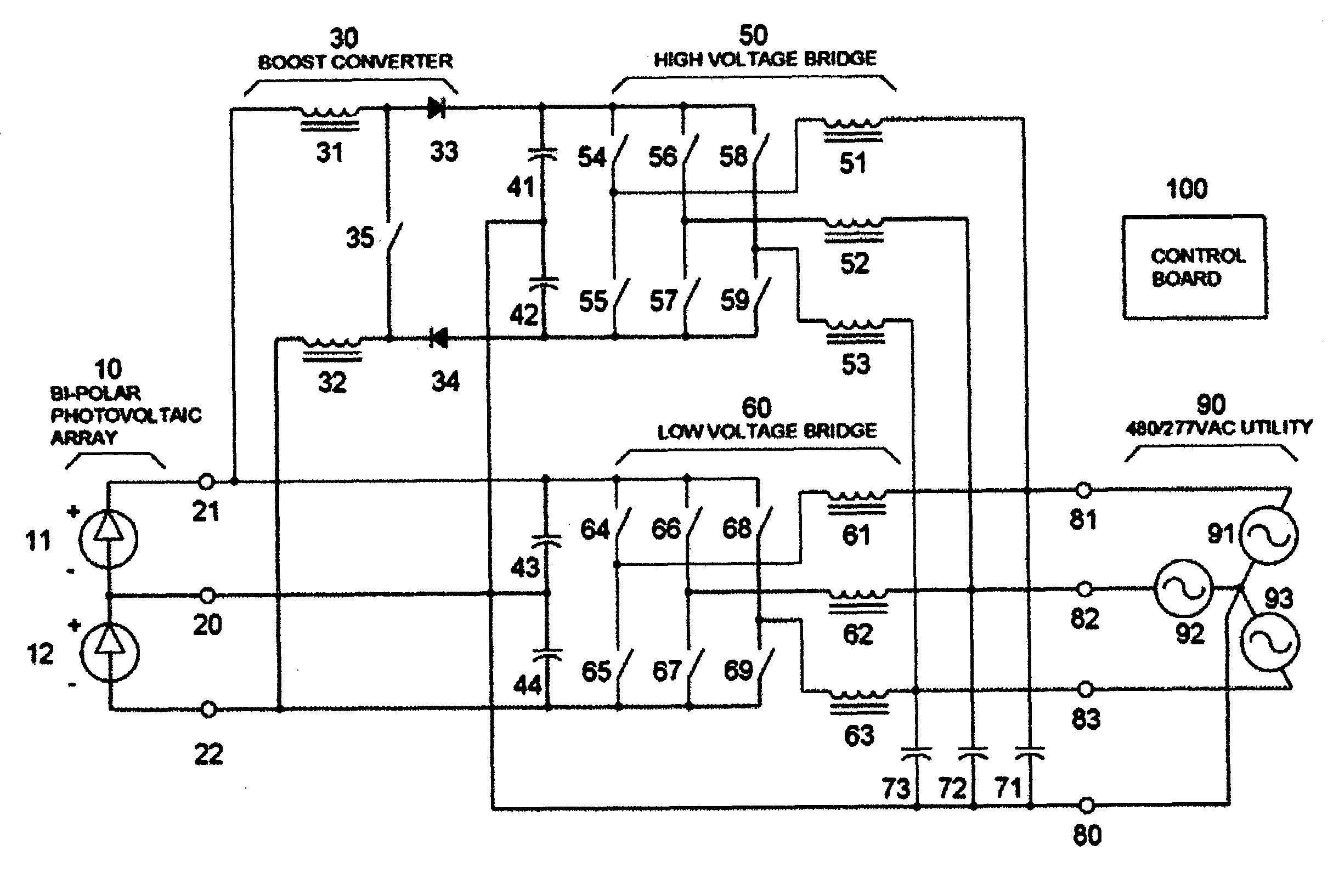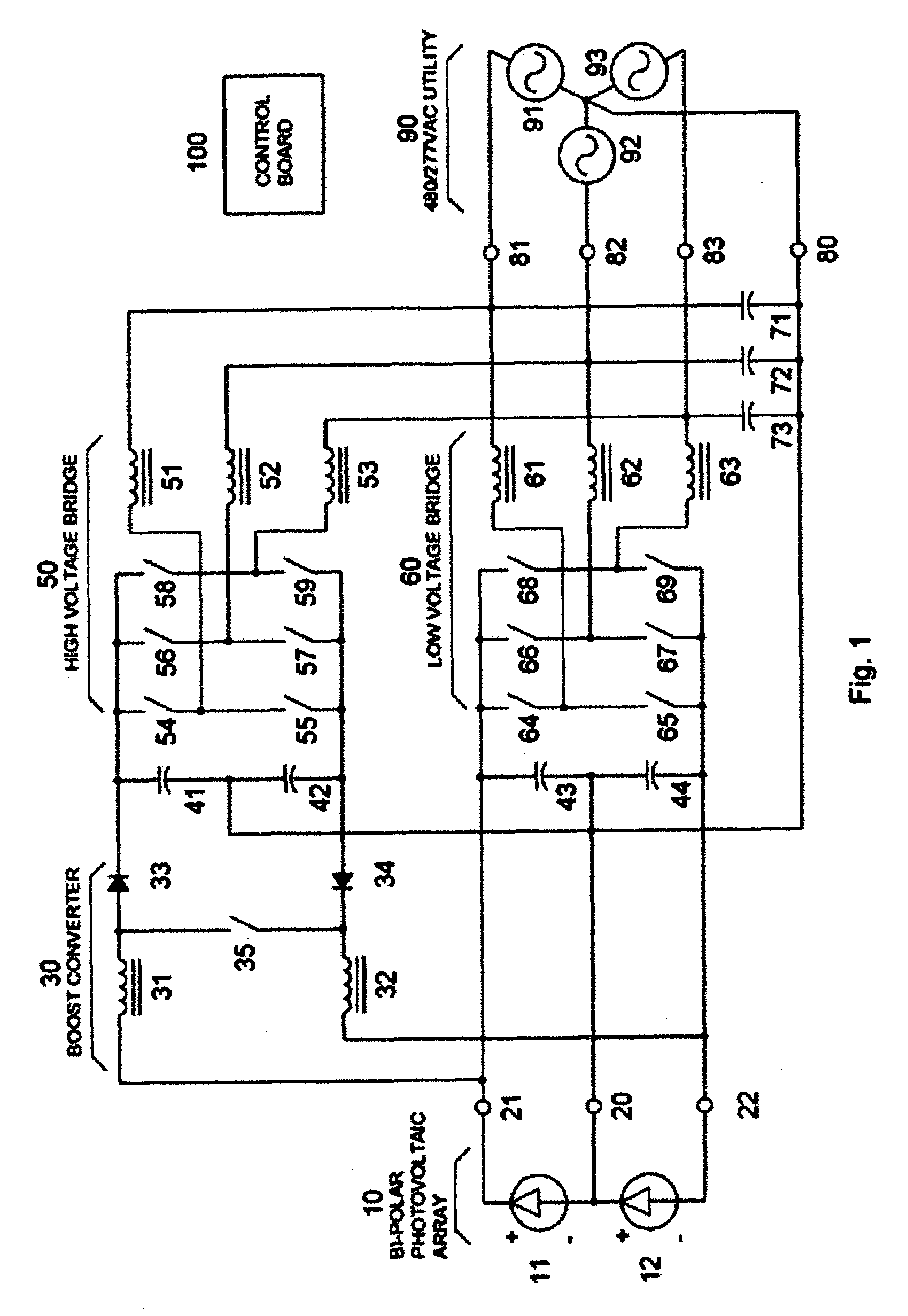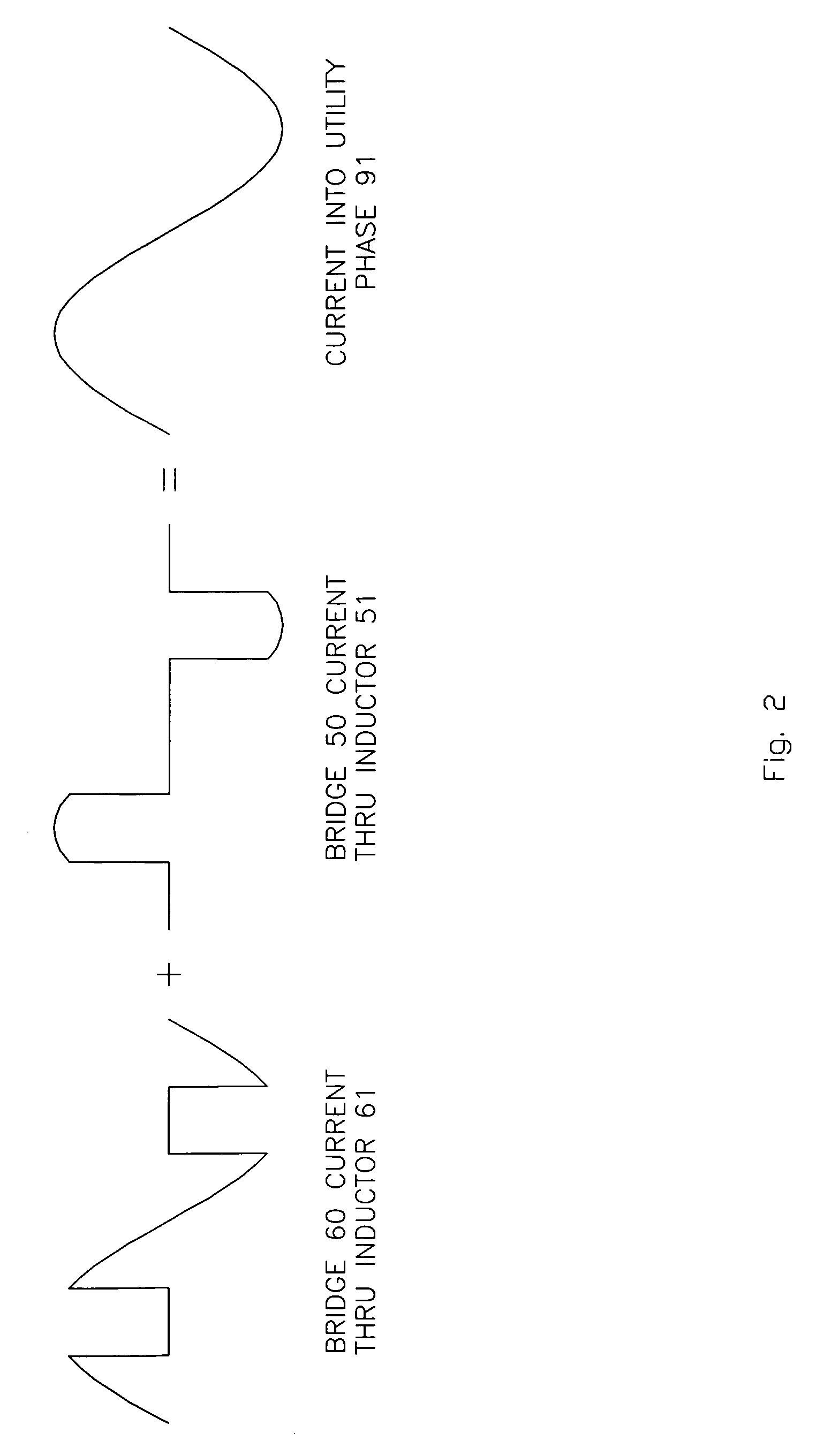Transformerless Utility-Grid-Interactive Inverter
a transformer and utility grid technology, applied in the direction of electric variable regulation, process and machine control, instruments, etc., can solve the problems of high current means, higher component cost, higher cost, weight and loss of transformer b>30/b>, and the effect of increasing the current of the transformer
- Summary
- Abstract
- Description
- Claims
- Application Information
AI Technical Summary
Problems solved by technology
Method used
Image
Examples
Embodiment Construction
[0010]FIG. 1 illustrates the preferred embodiment of the invention. Photovoltaic arrays 11 and 12 are connected in a bipolar configuration at the input of the power converter. Terminal 21 is positive with respect to ground, terminal 22 is negative with respect to ground and terminal 20 is reference to ground. Capacitors 43 and 44 are electrically connected across photovoltaic arrays 11 and 12 to form a low impedance DC bus for semiconductor switching elements 64-69. Semiconductor switching elements 64-69 are typically insulated gate bipolar transistors (IGBTs) arranged in a conventional three phase bridge arrangement with filter inductors 61-63. Switching elements 64 and 65 are switched on and off to create a pulse-width-modulated (PWM) high frequency pulse train. The pulse train is filtered by inductor 61. The current through inductor 61 is regulated by a servo loop, resident on control board 100, where the actual current through inductor 61 is compared to a desired sinusoidal curr...
PUM
 Login to View More
Login to View More Abstract
Description
Claims
Application Information
 Login to View More
Login to View More - R&D
- Intellectual Property
- Life Sciences
- Materials
- Tech Scout
- Unparalleled Data Quality
- Higher Quality Content
- 60% Fewer Hallucinations
Browse by: Latest US Patents, China's latest patents, Technical Efficacy Thesaurus, Application Domain, Technology Topic, Popular Technical Reports.
© 2025 PatSnap. All rights reserved.Legal|Privacy policy|Modern Slavery Act Transparency Statement|Sitemap|About US| Contact US: help@patsnap.com



